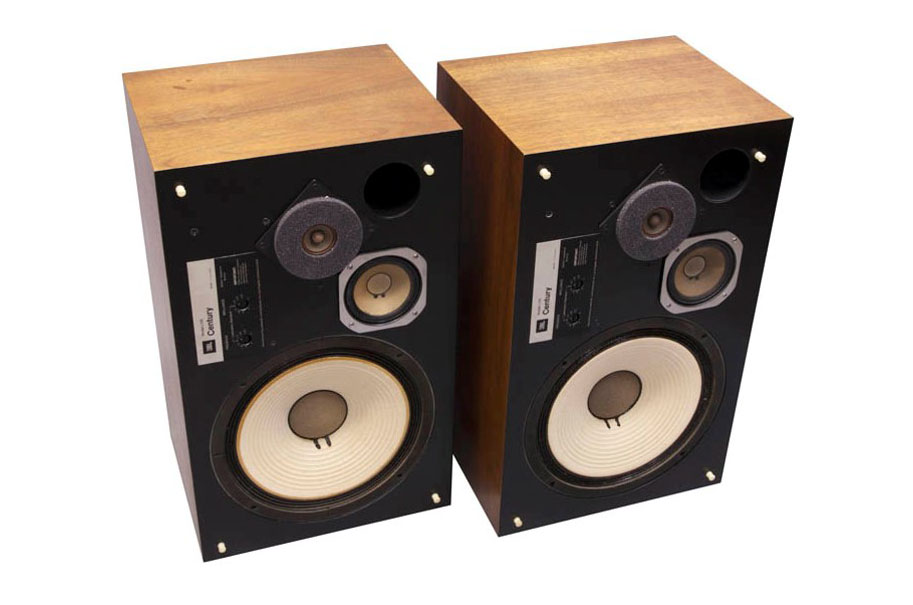Training Tips
JBL: James B. Lansing
From its origins to the latest in JBL Classic and JBL HDI speaker technology
By Chris Robinson, Manager, Global Training
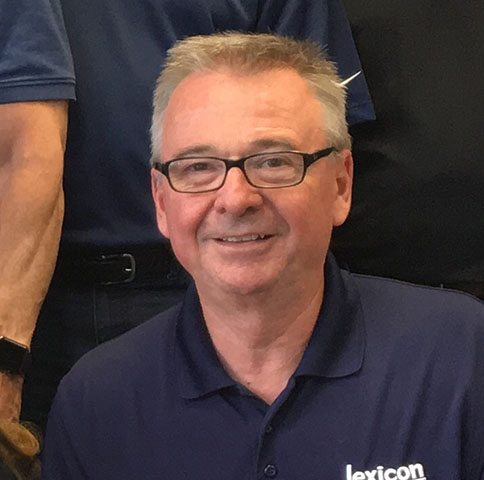
The Legacy
Nearly 75 years old, JBL is the longest running, most storied and recognized speaker brand in the world. Eighteen years before JBL was formed in 1946, its founder, James B. Lansing, developed his first quality loudspeaker under the name Lansing Sound. In the 1930s, Lansing partnered with an engineer from MGM Studios to develop cinema’s first technically advanced speaker system, an achievement that won industry awards and critical acclaim. Another company, Altec Lansing, grew out of this development and while James Lansing sold his shares in this company in 1941, Lansing formed JBL to continue the advancement of the speaker technology established in these previous ventures.
Since those early years, JBL has been synonymous with groundbreaking speaker engineering producing the best in theater, live music, and studio sound. Home audio products in the 1950s and 60s benefited from professional developments such as the compact 4310/4311 studio monitors that Dr. Sydney Harman turned into the largest selling JBL home speaker of all time. This legendary speaker was the acoustically identical JBL L100 Century. It is this legacy that continues in JBL Synthesis and JBL Premium Loudspeakers, representing the best home audio the company can produce.
Engineering of Loudspeakers
JBL is first and foremost a speaker engineering company that designs everything in its products and has them manufactured to its exact specifications. Scores of patents have been awarded over the years, most recently for ground-breaking D2 compression driver technology developed by JBL Professional (in the 2010s). D2 compression drivers were first used in the VTX line array system for live concerts. This new driver virtually eliminated cone breakup distortions that were inherent in “dome compression” type speakers, and offered “high end” ultra-low distortion sound to large audiences.
The same D2 driver was then engineered into the M2 Studio Monitor which added a revolutionary High Definition wave guide or “horn.” This waveguide eliminated distortion caused by the sound passing through the throat of the horn and into the room. The M2 is considered by many in the recording industry as the finest studio monitor of all time, and is the crown jewel of JBL Studio monitors. It is these developments that led to the compression driver/horn waveguide speakers used in JBL Synthesis systems and in the new HDI and Premium speakers today.

Compression driver and waveguide technology are not the only speaker technologies that JBL has pioneered and perfected. Patents over the years in home and studio designs were also a focus of the company. One notable development was the titanium dome high frequency driver that brought a new level of extended, smooth response to a number of JBL Speaker systems.
Most importantly, speaker engineering advancements have been accelerated at JBL’s parent company with the formation of the Acoustic Research Group, formed at Harman Corporate in 1991. This group, not tied into any Harman speaker brand, is focused on scientific research used to develop speakers that not only objectively measure well in an acoustic chamber, but are proven to sound the best in double blind listening tests. This research has been the key these last 20 plus years in understanding how people listen, and has greatly influenced how all the parts of a loudspeaker are put together. The company’s goal of being second to none and a proven industry leader continues.
A Legend Returns: The L100 and L82 Classics
The original JBL L100 Century was sold from around 1970 to 1978 and was the most recognized and loved JBL loudspeaker by multiple generations of music lovers. The live concert at Woodstock, NY in the summer of 1969 used JBL loudspeakers to service 500,000 concert attendees. This single event did much to highlight the introduction of this new speaker shortly after, born out of the recording studio environment for the home market.
Adored by musicians and music lovers alike, the explosion of stereo systems in the 1970s made the original L100 one of the most coveted audio speakers of the day. In 2018, JBL decided to reintroduce a new L100. The question was how to recreate a classic that captures both the emotions of the original with the scientific knowledge we gained about acoustics in the form of a loudspeaker that speaks to multiple generations of fans?
The JBL L100 Classic fills both requirements. At first glance, it looks remarkably like the original, but a closer look reveals a slightly larger and much heavier speaker system at 59 pounds each. While the grill looks the same, it uses modern materials that do not degrade with age. The cabinet, housing the 3-way array is larger and stiffer to accommodate the 12” woofer and the vertical mid-frequency/high frequency speakers for superior imaging. The titanium dome tweeter uses a considerably larger magnet structure for extended high frequency response and power handling. The system is engineered for exceptional dynamics, detail and imaging for any type of music.
While the L100 Classic “looks” like a bookshelf speaker, it is quite large and sounds best on its JS120 speaker stand. Using the stand, angles the speaker up perfectly for listening from a distance of about eight feet. For some, the L100 Classic may be too large for their space or they desire something smaller and at a lower price point. Introducing the L82 Classic.
The L82 Classic does not mirror any exact design from the 70s or 80s but instead recreates the look and sound of the L100 Classic in a smaller, position-wise more flexible little brother. (To me, it looks like the L26 my roommate had in college but I digress). The L82 features a 2-way design with an 8” woofer and identical tweeter to the L100 Classic. It sounds much like the L100 Classic with a little less bass and will not play quite as loud. For those who desire a smaller L100 Classic however, it fulfills its role exceptionally well and sounds best elevated either on a bookshelf or on its custom speaker stands, the JS-80. These tall stands can even be used on the L100 Classics if a higher placement is desired or if the seating position is closer than 8 feet.
Finally the L82, being a 2-way speaker with a higher crossover point from the woofer, is pair-packed in offset mirror-imaged right and left speakers to enhance its superb imaging ability. This design element contrasts with the L100 Classic where a mirrored driver array is not needed due to a much lower crossover point.
Both the L100 and L82 Classics are modern speaker designs that harken back to the emotions and feel of the 1970s. As Les Paul wrote in 2006 in “The JBL Story” by John Eargle, ”Remember, it’s all about the music!”
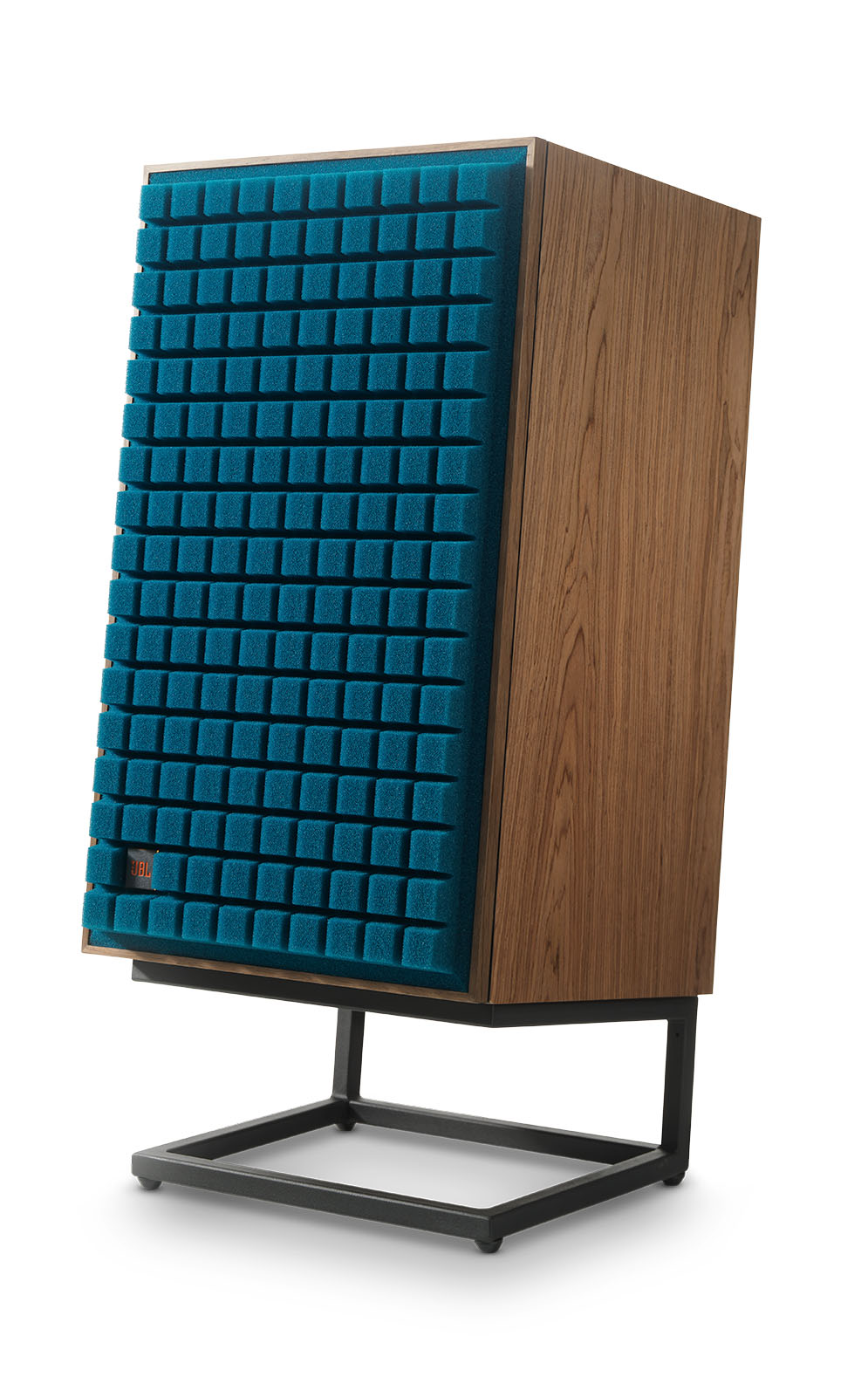
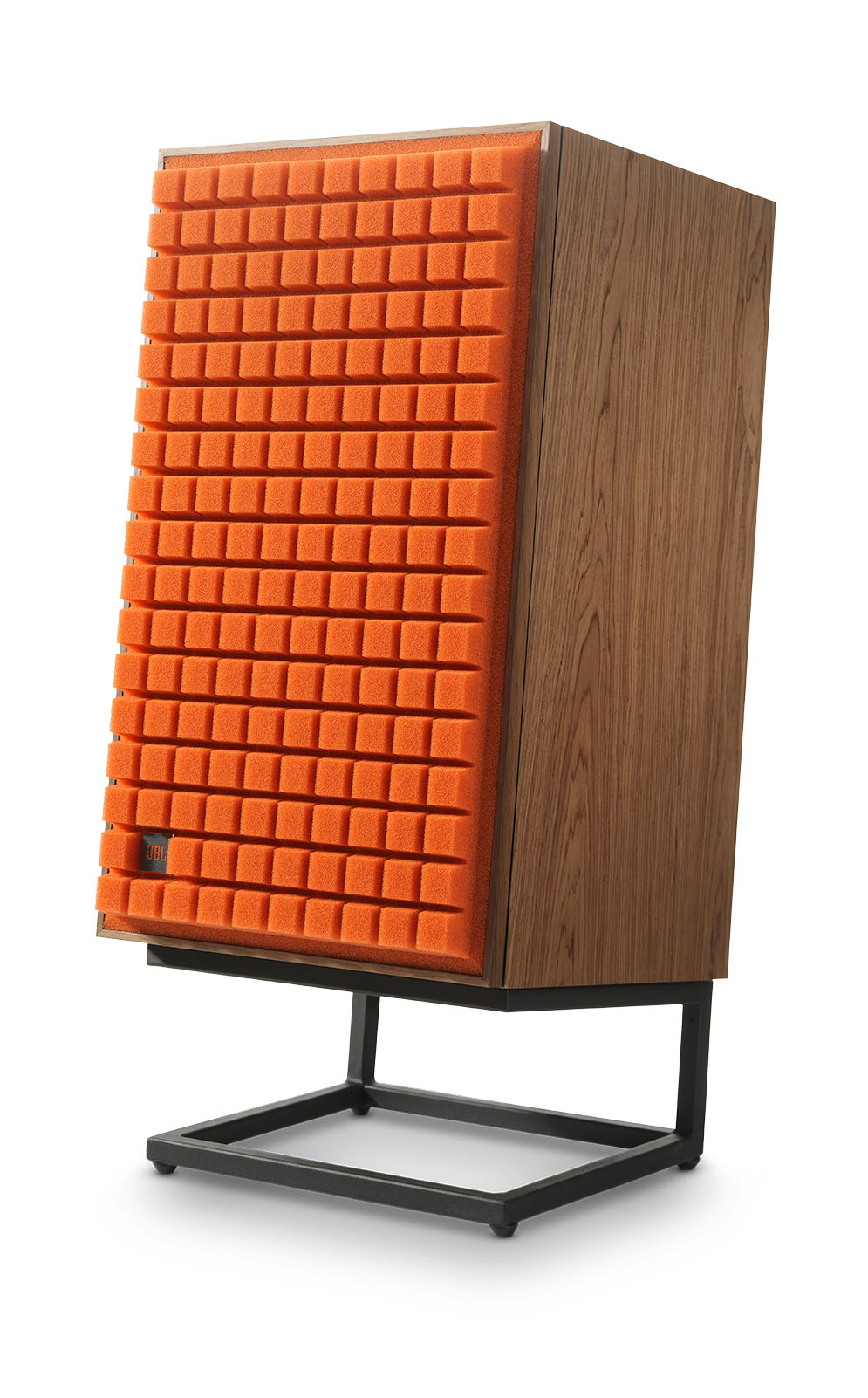
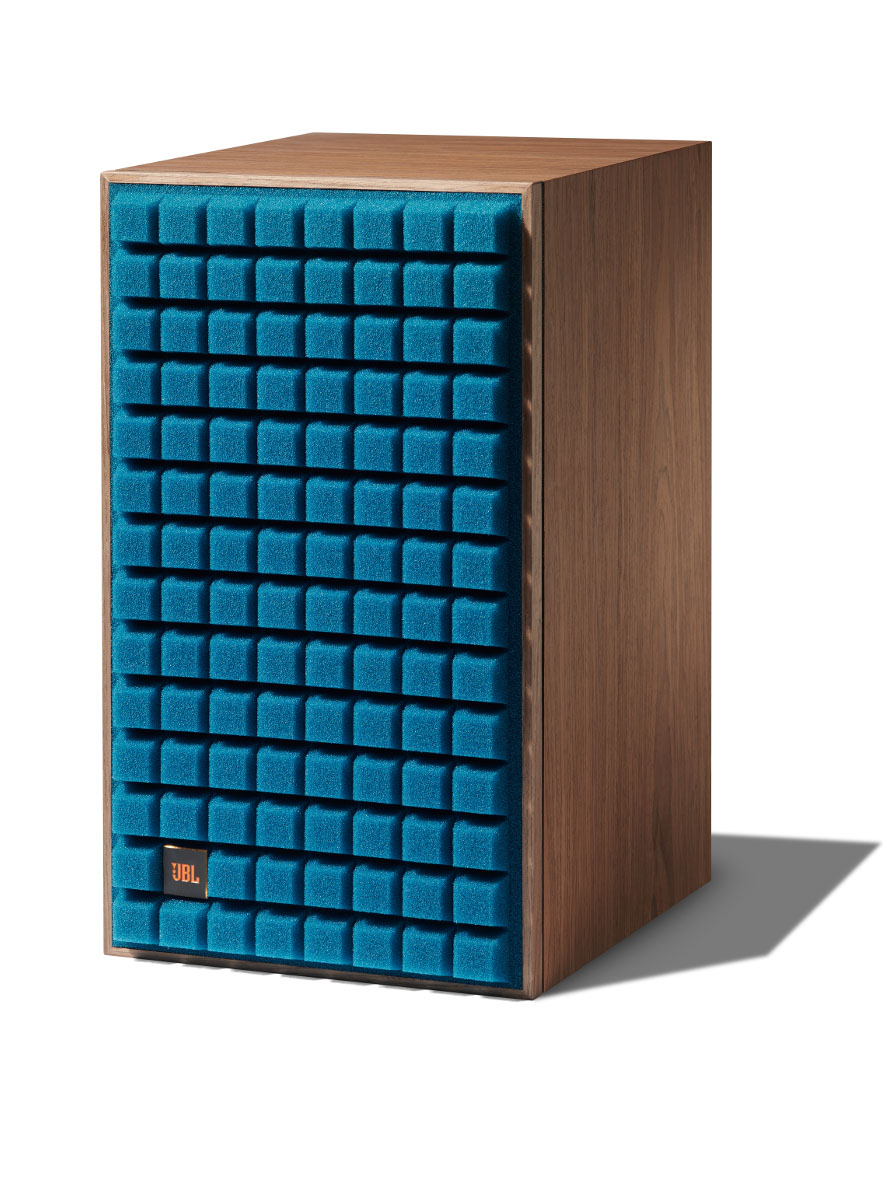
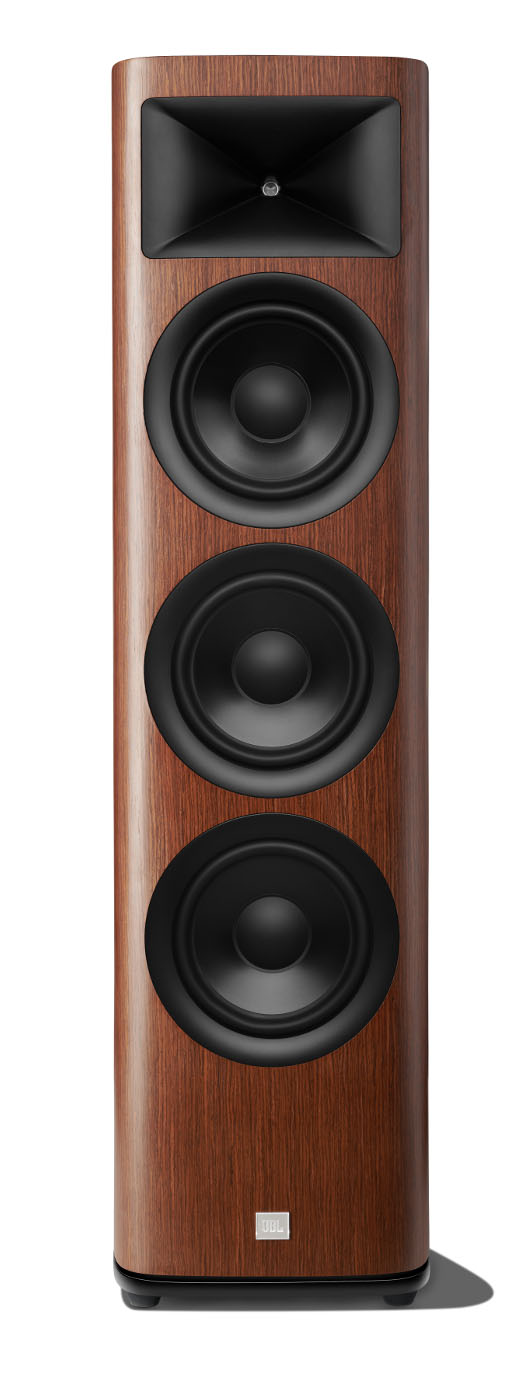
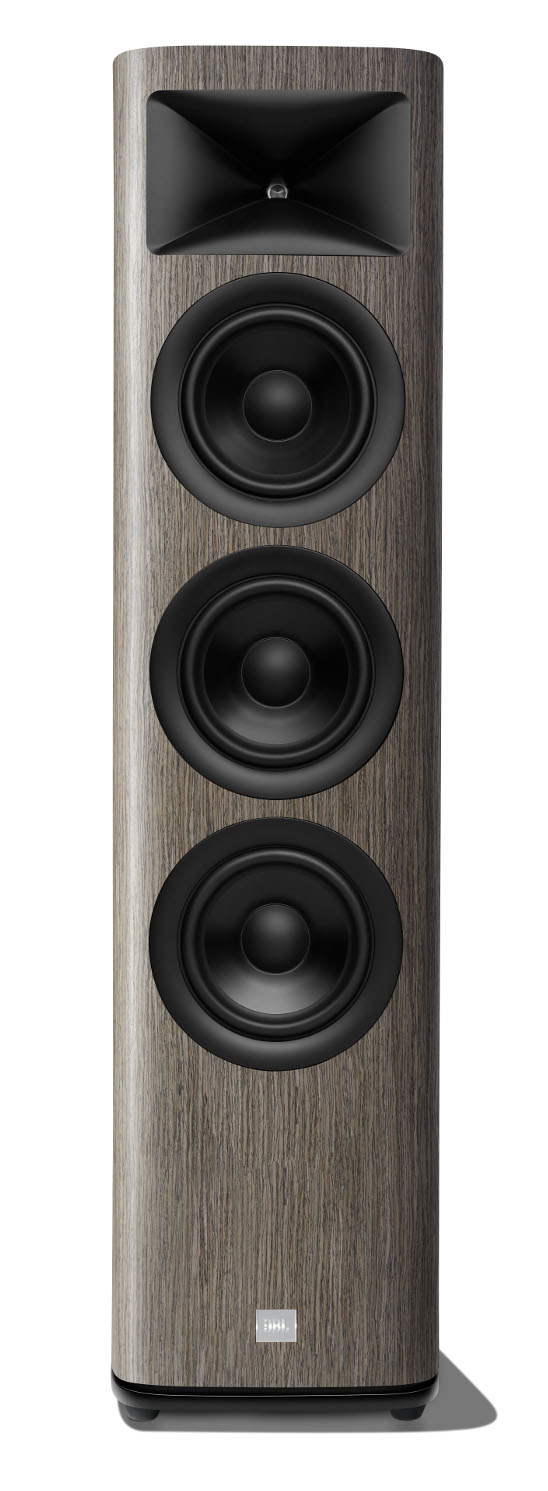
High Definition Imaging: The HDI Line of Speakers
The new HDI (High Definition Imaging) series of loudspeakers uses the most modern materials available, and compression driver technology derived from our best JBL Professional monitors and JBL Synthesis speaker systems. Unlike other systems, each driver (or speaker) used in the cabinets is newly engineered. The HDI speakers did not borrow any component from a previous model. The result is stunning dynamics and clarity in a variety of applications in both 2-Channel “music only” systems and high-performance home theaters.
A beneficial characteristic of compression driver/waveguide designs, in general, is the controlled response into the room when compared to similar dome and cone designs The HDI Series focuses its energy 100 degrees horizontally and 80 degrees vertically, which contrasts with dome tweeters that typically disperse in patterns up to and beyond 180 degrees. This dispersion control has multiple benefits: First, it minimizes any adverse effect the room may cause by minimizing reflections. Second, it provides the same energy within its dispersion arc, a great benefit when listening off axis as the speaker sounds consistent within the coverage area. These are the characteristics needed in a concert venue or large cinema space that produces superior dynamics and room-filling sound.
The main speakers include two floorstanding models of a 2.5 way design; the HDI-3800 using three 8-inch woofers, and the HDI-3600 with three 6½-inch woofers. This 2.5 way design offers exceptional efficiency where the top woofer nearest the HDI waveguide is crossed over into the waveguide for better matching dispersion. The lower two woofers are dedicated to the lower frequencies of bass. The combination of all three, offers high output and deep extension in the low frequencies.
The HDI-4500 center channel is also a 2.5 way design and uses four 5¼-inch versions of these same drivers, implemented to not suffer from the narrowing dispersion effect of typical horizontal center channel speaker designs. Finally, the HDI-1600 is a 2-way bookshelf and uses a single 6½-inch woofer. It’s exceptional for use as any channel in both a stereo or home theater system.
Woofer driver technologies developed over the years such as flux stabilizing rings, copper shorting rings and symmetrical field motor design are employed and all contribute to the high output and low distortion of these components. Each of these are wholly designed and engineered (like the Classic series) in Northridge, California by a dedicated, multi-disciplined engineering team. Similar technology is used in the 12-inch, 1000 Watt HDI-1200P subwoofer, which has proven to be our highest performing 12-inch powered subwoofer in JBL history.
A new 1-inch (2410H-2) D2 family compression driver is used in all four main speakers and this driver appears for the first time in the HDI family assuring smooth high frequency reproduction. This new compression driver is mated with an HDI waveguide, first used in the M2 and later in all JBL Synthesis speaker systems. The result is that all the speaker’s benefit from the same even, smooth hemispherical response, and have the same timbre in each model. This identical compression driver and HDI waveguide geometry assure that when used in a home theater system for all lower level channels, the imaging and immersion is three dimensional and lifelike.
A Final Word
We can think of no other premium speaker company that has enjoyed the reputation and continuous adaptation to market conditions as has JBL. It has been the people, management, engineers, marketing and sales, who have come together to steward the brand for these many years. Generations of the company have done so with the dedication to maintain the innovation and technical excellence that the founder, James Lansing instilled in the brand from the very beginning. While advanced technology is important, it’s the people who continue to make and keep the brand relevant today and in the future. Happy listening!
Reference: The JBL Story by John Eargle

